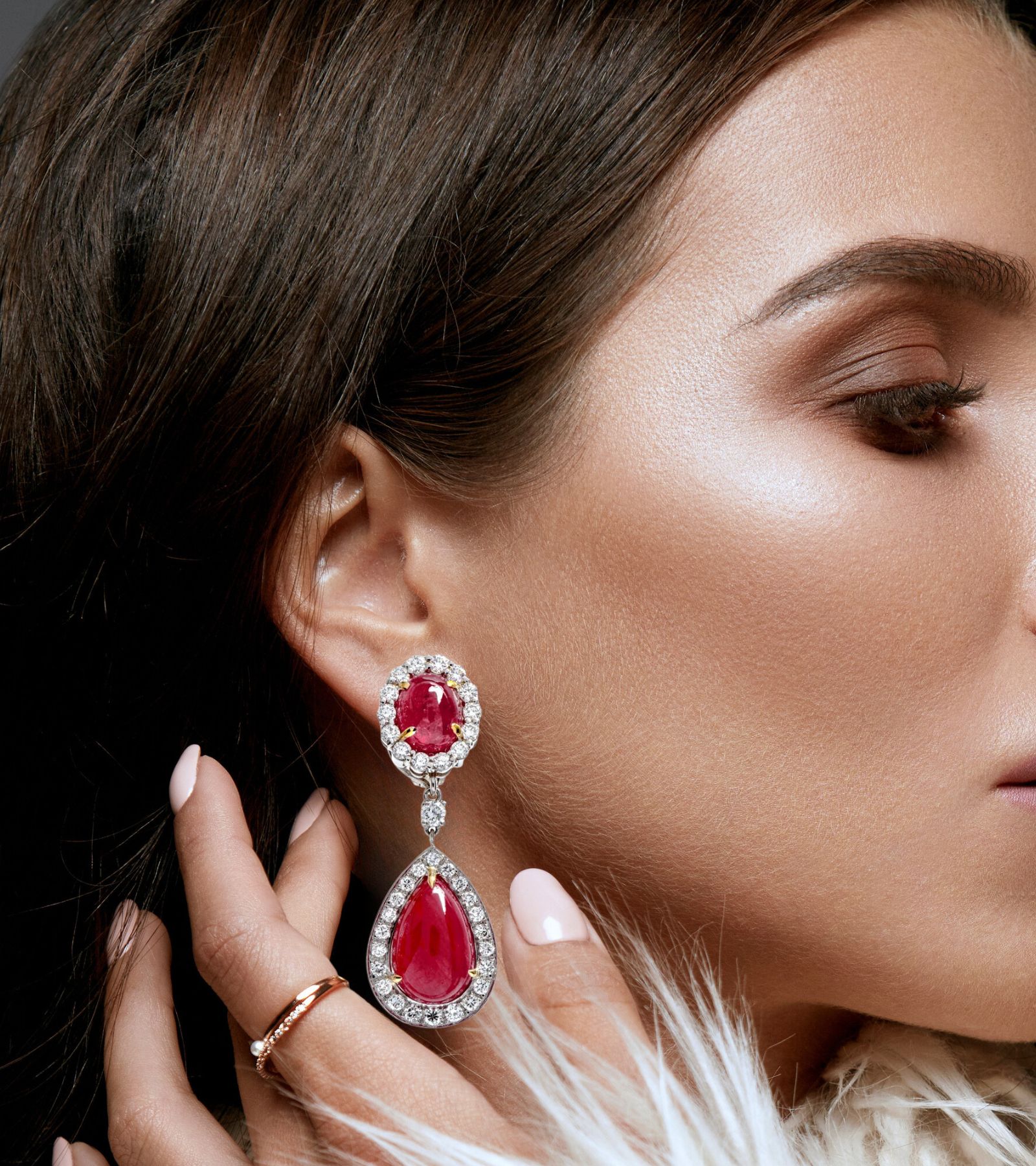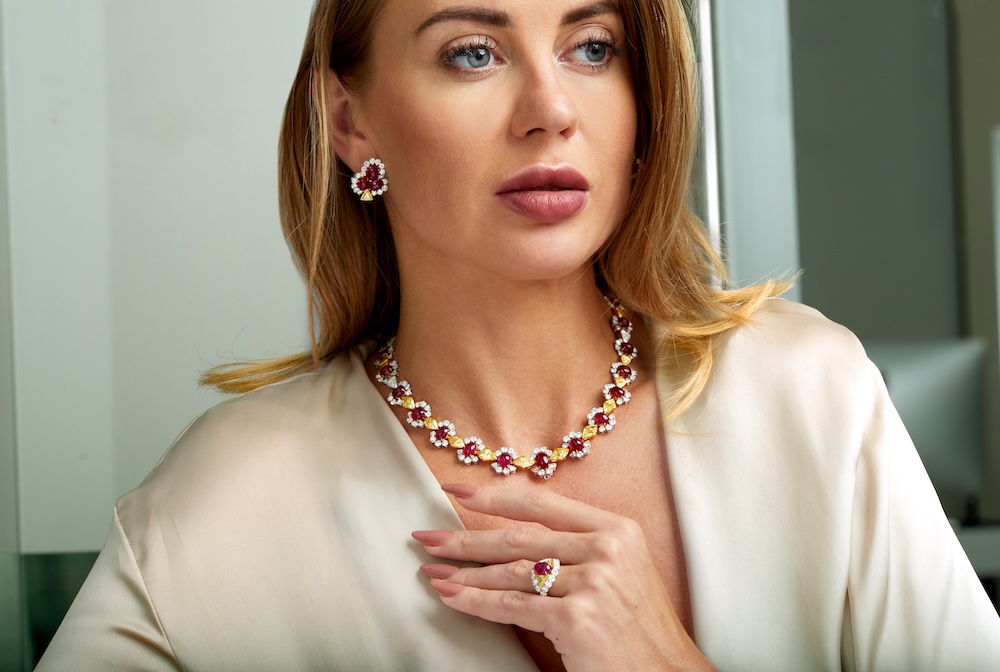
How to Identify Authentic Ruby Gemstone Jewelry
Ruby is one of the most beautiful gemstones, cherished for its deep, vibrant red color, which symbolizes passion, love, and royalty. Recognized for its durability, rubies are the second hardest gemstone after diamonds. So how can you recognize A Real Ruby from A Fake? They are typically found in countries like Thailand, Vietnam, Kenya, Myanmar (Burma), and Afghanistan. However, with the increasing presence of synthetic rubies, it’s essential to know how to distinguish genuine rubies from imitations. In this guide, we’ll walk you through the key factors to identify authentic ruby gemstones.
Key Factors to Identify Authentic Ruby Gemstones
Color and Clarity
The color of a ruby is one of its most defining features. Genuine rubies exhibit a deep red hue, typically in medium to dark tones. Be cautious if a ruby’s color appears unnaturally vibrant or bright, as this could indicate a synthetic stone. Natural rubies tend to have inclusions (internal flaws) due to the natural formation process. If you notice a flawless ruby, it’s likely to be a synthetic or treated stone.
Rubies are often described using the “pigeon’s blood” term, referring to the finest rubies, which have a vivid red color with a hint of blue. This coloration is extremely valuable and prized by collectors and jewelers alike.
For more information on how rubies are graded by color, check out the Gemological Institute of America (GIA).
Cut and Hardness
A well-cut ruby will have symmetrical facets that reflect light evenly. A poorly cut or irregularly shaped ruby may indicate it’s not genuine. Rubies are one of the hardest gemstones, scoring 9 on the Mohs scale. If a ruby scratches easily or shows signs of wear, it is most likely not a genuine ruby.
Additionally, rubies are more durable than many other gemstones, which means they hold up better over time. If a stone feels fragile or shows visible damage easily, it may not be authentic. A high-quality ruby will retain its luster and brilliance even under regular wear.
For a comprehensive guide on the hardness of gemstones, visit the Mohs Hardness Scale on Geology.com.
Conducting a Scratch Test
To verify authenticity, perform a scratch test:
- Step 1: Clean the ruby using a damp cloth or toothbrush to remove any debris.
- Step 2: Try scratching the stone with your fingernail. Genuine rubies are tough and should not be scratched easily.
- Step 3: Test the stone with items like a knife, sandpaper, or a piece of glass. Real rubies will remain unscathed.
- Step 4: Drag the ruby across a porcelain plate. If the stone leaves a color streak, it is not a genuine ruby. Rubies do not leave any marks, while fake stones may streak with color.
This simple method helps to determine if your ruby is genuine or not.
Weight and Heat Resistance
Genuine rubies are denser than synthetic alternatives, so if a stone feels unusually lightweight for its size, it might not be authentic. Additionally, rubies are highly heat-resistant. You can perform a basic heat test by briefly exposing the stone to a flame (with tweezers and proper precautions). A real ruby will not be affected by heat, whereas a fake ruby might change color or get damaged.
Professional Authentication
If you’re still unsure about the authenticity of your ruby, consider seeking help from a professional gemologist. A gemologist uses specialized equipment to evaluate rubies accurately and provide conclusive assessments. Dover Jewelry has a vast collection of authentic ruby gemstone jewelry, and our GIA-certified gemologists are always available to assist with expert advice.
Where and How Rubies Are Mined
Rubies are primarily mined in countries like Myanmar (Burma), Thailand, Sri Lanka, Kenya, Madagascar, and Mozambique. The quality and color of rubies can vary significantly depending on their geographical origin. Rubies from Myanmar, particularly those from the Mogok region, are known for their exceptional color and are often considered the finest rubies in the world. These rubies are typically referred to as “Mogok rubies” and are highly prized for their deep red to slightly purplish red color.
Ruby Mining Techniques
The methods used to mine rubies vary by location and type of deposit. Here’s an overview of common ruby mining techniques:
- Alluvial Mining: In regions like Sri Lanka, rubies are often found in riverbeds or shallow alluvial deposits. Miners sift through gravel and sediment to find rubies that have been washed away from their original source. This method is commonly used in areas where rubies are relatively close to the surface.
- Primary Mining: In countries like Myanmar, rubies are typically mined from the earth in primary deposits, often found deep in the ground. Mining these rubies requires more complex operations, including drilling and blasting, and can be labor-intensive.
- Artisanal Mining: In countries like Mozambique and Kenya, small-scale miners often use hand tools and rudimentary methods to extract rubies. While this method is less efficient, it has been the source of many high-quality rubies in recent years.
The Role of Heat Treatment in Rubies
Heat treatment is commonly used to enhance the color and clarity of rubies. While natural rubies are often heated to improve their appearance, this process is generally considered acceptable in the gemological industry. However, some rubies undergo more extreme heat treatments, including the addition of flux to fill in visible fractures. These treatments are disclosed in gemological reports and must be taken into account when purchasing rubies.
For more details on ruby treatments, check out this GIA article on ruby treatments.
Caring for Your Ruby Jewelry
Rubies are extremely durable and require minimal care. However, it is essential to protect them from harsh chemicals and avoid wearing them in the pool or while bathing. Store your rubies separately from other jewelry pieces to avoid scratching them, especially when kept with softer gemstones.
For cleaning, use soapy water and a soft brush to remove dirt and debris. Rinse thoroughly with clean water and dry with a soft cloth to keep your rubies looking their best.
How to Protect Your Ruby Jewelry Investment
While rubies are tough, they still require regular care. Here are some tips to keep your rubies safe:
- Avoid harsh chemicals: Stay clear of chemicals like chlorine and bleach, as they can damage the stone.
- Store safely: Keep your ruby jewelry in a soft pouch or box to avoid accidental scratches.
- Clean carefully: Use mild soap and a soft brush to clean your rubies, and dry them properly after cleaning.
Celebrate July Birthdays with Authentic Ruby Jewelry
Rubies are the birthstone for July, making them a meaningful gift for those born in this month. At Dover Jewelry, we offer an extensive collection of authentic vintage, antique, and estate ruby jewelry, perfect for celebrating July birthdays. Visit our Birthstones Pages, showcasing our rare collection of Monthly Birthstone gems
Why Choose Dover Jewelry?
The Rare Gems Team at Dover Jewelry Miami Brickell specializes in Vintage and Modern Ruby and Rare Gemstones. Our staff of Gia Gemologists and Master Jewelers welcome your inquiries and the ability to answer all your questions about that Singular Piece of Jewelry you seek. The only jeweler on Brickell in Miami Florida, Dover Jewelry specializes in vintage and modern ruby and rare gemstones. We are committed to offering only the finest authentic gemstones, all authenticated by our GIA-certified gemologists. If you have questions about a ruby or need assistance with a specific piece, feel free to reach out to us for a complimentary consultation.
Contact Dover Jewelry:
1000 Brickell Ave, Suite 100
Miami, FL 33131
Phone: 1.877.777.6111
Email: contact@doverjewelry.com




